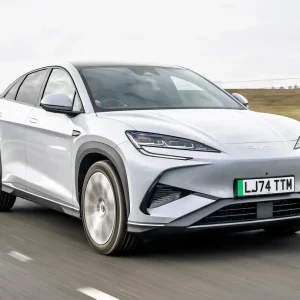Arval’s ‘Mobility Observatory Barometer’ proclaimed that six out of 10 companies have no grey fleet policy in October last year. Generally regarded as a reflective industry metric, this was the first time the annual survey had asked this question, and it also revealed that a mere 16% of respondents had what the leasing firm described as a ‘comprehensive’ policy – one that actually spells out what a grey fleet vehicle is, what is and is not permitted, and what is expected of drivers.
It was a pretty consistent state of affairs for businesses big and small, as 34% of companies with fewer than 10 employees and 39% of those with more than 1,000 employees had a policy.
That grey fleet management is in such disarray is not a surprise. The extent of the disarray is. Business Car has often said that it is absolutely fine in well-managed moderation but – and this is a sweeping statement – any fleet management specialist worth their salt will tell you how rare it is to find a grey fleet done well.
On announcing the figures, Arval’s head of Mobility Observatory, Shaun Sadlier, described them as “probably the single most worrying finding” of the survey, and expressed his surprise that the issue affected fleets of all sizes more or less equally.
“It is crazy,” he tells Business Car, “they just anticipate that if they need somebody in their own car to do it [the job], then that’s absolutely fine. When we are doing policies with clients, we’re actively looking to see if grey fleet is there or not.”
“Ultimately, as the employer, you’ll be liable from a health and safety perspective when there’s an accident,” adds Samantha Roff, managing director at Venson Automotive Solutions, “I think people don’t realise, and they don’t have enough risk assessment around grey fleet.”
The concern typically centres around the lack of control over the vehicles when, ultimately, the business is responsible for work trips conducted by the employee. Condition/roadworthiness, age, emissions, and whether or not it has business insurance are among the common pitfalls. Compared with a company car or even cash allowance, it is incredibly difficult for fleets to have sight of or wield any realistic degree of control over these factors. Throw in the BVRLA’s claim that the average grey fleet vehicle is 6.1 years older than a leased car and emits another 24g/km (it does not publish the date those figures were collated on its website, but they work as a general, if potentially aged, benchmark), and you can see why some businesses just flat-out prohibit it.
Even so, that is not a surefire method to stamp it out. Sadlier describes a case of auditing a large company with exactly that approach, when the reality was entirely to the contrary.
“When we got stuck in and we got the data, we found that they had a significant amount of mileage that was not being covered. What that meant is that the mileage claims were going through different areas of expenses, so they [the company] had no control over it.
“They didn’t know the mileage or what the CO2 output from that would be if they were having to report on it. They didn’t even know what type of vehicles they were and, for some of them, we wouldn’t be recommending that anybody should use that type of vehicle.”
Throughout our years of reporting on this topic, we have heard some weird and wonderful anecdotes from fleet specialists about the hotchpotch of cheeky ‘business vehicles’ they have uncovered during audits. Our favourite was a 1960s Dennis fire engine, but the shortlist includes bus-sized American recreational vehicles, classic supercars, and heavily modified Japanese grey imports. You baulk and cackle in equal measure, then, if the fleet is your responsibility, you swear.
Roff sees no reason to complicate a grey fleet policy. As she puts it, “it’s not rocket science, it’s just an admin burden,” and stresses that it can be confined to a page.
“It doesn’t need to be a long policy. If you do those checks when you are running a company vehicle – making sure it’s roadworthy, it’s serviced, it’s got the right insurance, and that your drivers are not at risk. all you need to do is the same for a grey fleet driver. The issue is obviously that it’s a bit more time-consuming because they’re not your vehicles. but it could be a one-page policy. It’s just making sure you’ve done the checks.”
The industry-standard cut-off for grey fleet is typically 10,000 business miles per year. Exceed that, and businesses of a certain size and with a handle on fleet will often consider it the tipping point for a company vehicle. The trouble with that figure is that it is one of those legacy numbers that is neither particularly scientific, nor entirely reflective of the times.
“We see companies that say, for example, if someone’s doing 5,000 business miles, they have to take a company vehicle. Others say 10,000,” says Sadlier, “but even if you’re doing 5,000, that’s 100 miles a week. We don’t necessarily set a level, but we will talk to clients, try and understand what their business is about, and why they set it as 5,000 or 10,000. After that, I don’t see any reason why you wouldn’t be looking at [a company car], because that’s 200 business miles a week.
“If we saw somebody doing insane [grey fleet] mileage, then we would probably challenge why they were doing that, and we would do some cost comparisons against a company vehicle, but also bringing in other things they would need to consider, like insurance, MOT, servicing etc.”
Business mileage obviously dropped during the pandemic and video calls, while less prolific than in the first two years of the decade, have unquestionably replaced at least a portion of physical meetings. Arval told us its average mileage for corporate passenger cars delivered in 2023 was 16,000, which really is not that much higher than grey fleet’s ‘line in the sand’ figure, and arguably makes a case for adopting a company vehicle at a lower mileage point.
The other age-old grey fleet problem is the incentive for employees to drive more and/or round up the mileage they actually covered when they claim expenses. A rate of 45p per mile is irresistible to a lot of people – irrespective of background or pay grade – and if the option is there for them to lop on a little extra without any checks and balances, they probably will.
The headline price might appear higher, but rental is the go-to alternative for employees who make the odd business trip, because it will almost certainly be cleaner, more likely compliant, and less fuss than sending someone out in their own car (assuming it is administered correctly).
“If you’ve got staff that might be using their car once every two years for a training course, do you really want to go through all the administration of checking their service history, the MOT, business insurance, and all the things you would reasonably need to check for that one trip every two years?” asks Roff.
“A lot of these trips go off the radar – maybe not if you are in a small company where you’re all based in one place, but certainly with slightly bigger businesses that are trying to control this centrally across multiple branches or depots – are you really going to know every time someone uses their own vehicle? That’s why it’s sometimes easier to say you don’t use your own vehicle for incidental travel.”
The difficulty, assuming an organisation wants to cut down on its grey fleet, is employees that fall between those very occasional business trips and Sadlier’s suggestion of a 5,000-miles-per-year cut-off. Specialists will acknowledge that this bracket is much harder, particularly with those who do lots of short trips – common among public sector workers. Operationally, a company vehicle probably still makes sense, but it is trickier to justify when the driver is potentially covering fewer than 4,000 business miles annually.
It is always worth looking at alternatives – such as pool cars and public transport, the latter potentially with a dedicated or pre-paid travel card – but there will inevitably be cases when grey fleet is the most realistic option.
As Roff explains, the decision about whether or not to stick with it is entirely circumstantial: “It’s not just about the regularities of what they’re doing, where they’re going or how far. If someone’s doing a five-mile trip once a week, you might consider that grey fleet, or look at a form of public transport – but what are they carrying?
“We see a lot of engineers or people in service-related roles now, some have KPIs, and some are going out to see customers regularly. For me, it’s the use of the vehicle, as well as how far it’s travelling and how regularly it’s travelling. That’s how an organisation would cut that up.”





